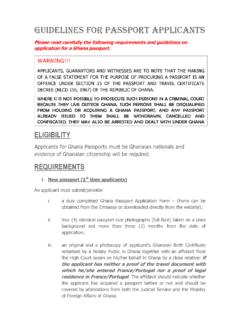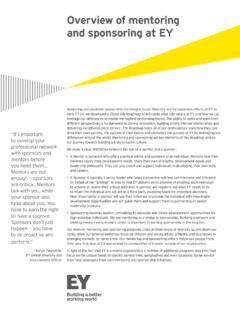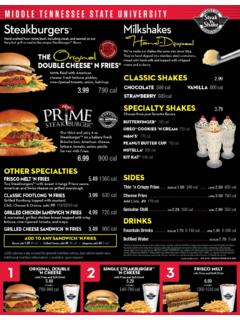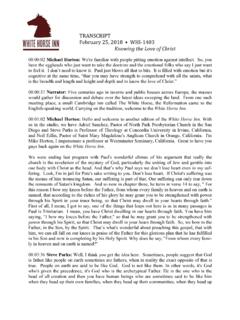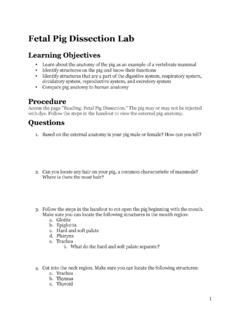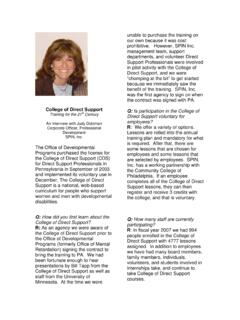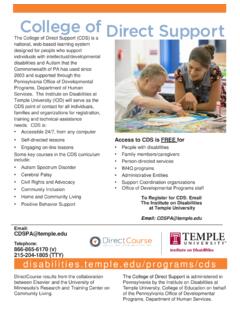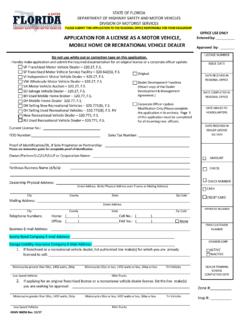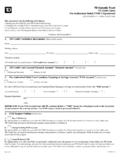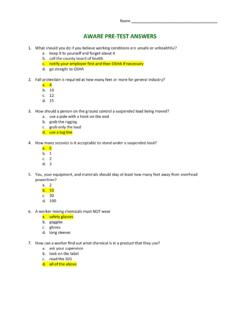Transcription of Improving Language Understanding by Generative Pre …
1 Improving Language Understanding by Generative Pre-Training Alec Radford Karthik Narasimhan Tim Salimans Ilya Sutskever OpenAI OpenAI OpenAI OpenAI. Abstract Natural Language Understanding comprises a wide range of diverse tasks such as textual entailment, question answering, semantic similarity assessment, and document classification. Although large unlabeled text corpora are abundant, labeled data for learning these specific tasks is scarce, making it challenging for discriminatively trained models to perform adequately. We demonstrate that large gains on these tasks can be realized by Generative pre-training of a Language model on a diverse corpus of unlabeled text, followed by discriminative fine-tuning on each specific task.
2 In contrast to previous approaches, we make use of task-aware input transformations during fine-tuning to achieve effective transfer while requiring minimal changes to the model architecture. We demonstrate the effectiveness of our approach on a wide range of benchmarks for natural Language Understanding . Our general task-agnostic model outperforms discriminatively trained models that use architectures specifically crafted for each task, significantly Improving upon the state of the art in 9 out of the 12 tasks studied. For instance, we achieve absolute improvements of on commonsense reasoning (Stories Cloze Test), on question answering (RACE), and on textual entailment (MultiNLI).
3 1 Introduction The ability to learn effectively from raw text is crucial to alleviating the dependence on supervised learning in natural Language processing (NLP). Most deep learning methods require substantial amounts of manually labeled data, which restricts their applicability in many domains that suffer from a dearth of annotated resources [61]. In these situations, models that can leverage linguistic information from unlabeled data provide a valuable alternative to gathering more annotation, which can be time-consuming and expensive. Further, even in cases where considerable supervision is available, learning good representations in an unsupervised fashion can provide a significant performance boost.
4 The most compelling evidence for this so far has been the extensive use of pre- trained word embeddings [10, 39, 42] to improve performance on a range of NLP tasks [8, 11, 26, 45]. Leveraging more than word-level information from unlabeled text, however, is challenging for two main reasons. First, it is unclear what type of optimization objectives are most effective at learning text representations that are useful for transfer. Recent research has looked at various objectives such as Language modeling [44], machine translation [38], and discourse coherence [22], with each method outperforming the others on different Second, there is no consensus on the most effective way to transfer these learned representations to the target task.
5 Existing techniques involve a combination of making task-specific changes to the model architecture [43, 44], using intricate learning schemes [21] and adding auxiliary learning objectives [50]. These uncertainties have made it difficult to develop effective semi-supervised learning approaches for Language processing. 1. Preprint. Work in progress. In this paper, we explore a semi-supervised approach for Language Understanding tasks using a combination of unsupervised pre-training and supervised fine-tuning. Our goal is to learn a universal representation that transfers with little adaptation to a wide range of tasks. We assume access to a large corpus of unlabeled text and several datasets with manually annotated training examples (target tasks).
6 Our setup does not require these target tasks to be in the same domain as the unlabeled corpus. We employ a two-stage training procedure. First, we use a Language modeling objective on the unlabeled data to learn the initial parameters of a neural network model. Subsequently, we adapt these parameters to a target task using the corresponding supervised objective. For our model architecture, we use the Transformer [62], which has been shown to perform strongly on various tasks such as machine translation [62], document generation [34], and syntactic parsing [29]. This model choice provides us with a more structured memory for handling long-term dependencies in text, compared to alternatives like recurrent networks, resulting in robust transfer performance across diverse tasks.
7 During transfer, we utilize task-specific input adaptations derived from traversal-style approaches [52], which process structured text input as a single contiguous sequence of tokens. As we demonstrate in our experiments, these adaptations enable us to fine-tune effectively with minimal changes to the architecture of the pre-trained model. We evaluate our approach on four types of Language Understanding tasks natural Language inference, question answering, semantic similarity, and text classification. Our general task-agnostic model outperforms discriminatively trained models that employ architectures specifically crafted for each task, significantly Improving upon the state of the art in 9 out of the 12 tasks studied.
8 For instance, we achieve absolute improvements of on commonsense reasoning (Stories Cloze Test) [40], on question answering (RACE) [30], on textual entailment (MultiNLI) [66] and on the recently introduced GLUE multi-task benchmark [64]. We also analyzed zero-shot behaviors of the pre-trained model on four different settings and demonstrate that it acquires useful linguistic knowledge for downstream tasks. 2 Related Work Semi-supervised learning for NLP Our work broadly falls under the category of semi-supervised learning for natural Language . This paradigm has attracted significant interest, with applications to tasks like sequence labeling [24, 33, 57] or text classification [41, 70].
9 The earliest approaches used unlabeled data to compute word-level or phrase-level statistics, which were then used as features in a supervised model [33]. Over the last few years, researchers have demonstrated the benefits of using word embeddings [11, 39, 42], which are trained on unlabeled corpora, to improve performance on a variety of tasks [8, 11, 26, 45]. These approaches, however, mainly transfer word-level information, whereas we aim to capture higher-level semantics. Recent approaches have investigated learning and utilizing more than word-level semantics from unlabeled data. Phrase-level or sentence-level embeddings, which can be trained using an unlabeled corpus, have been used to encode text into suitable vector representations for various target tasks [28, 32, 1, 36, 22, 12, 56, 31].
10 Unsupervised pre-training Unsupervised pre-training is a special case of semi-supervised learning where the goal is to find a good initialization point instead of modifying the supervised learning objective. Early works explored the use of the technique in image classification [20, 49, 63] and regression tasks [3]. Subsequent research [15] demonstrated that pre-training acts as a regularization scheme, enabling better generalization in deep neural networks. In recent work, the method has been used to help train deep neural networks on various tasks like image classification [69], speech recognition [68], entity disambiguation [17] and machine translation [48].

